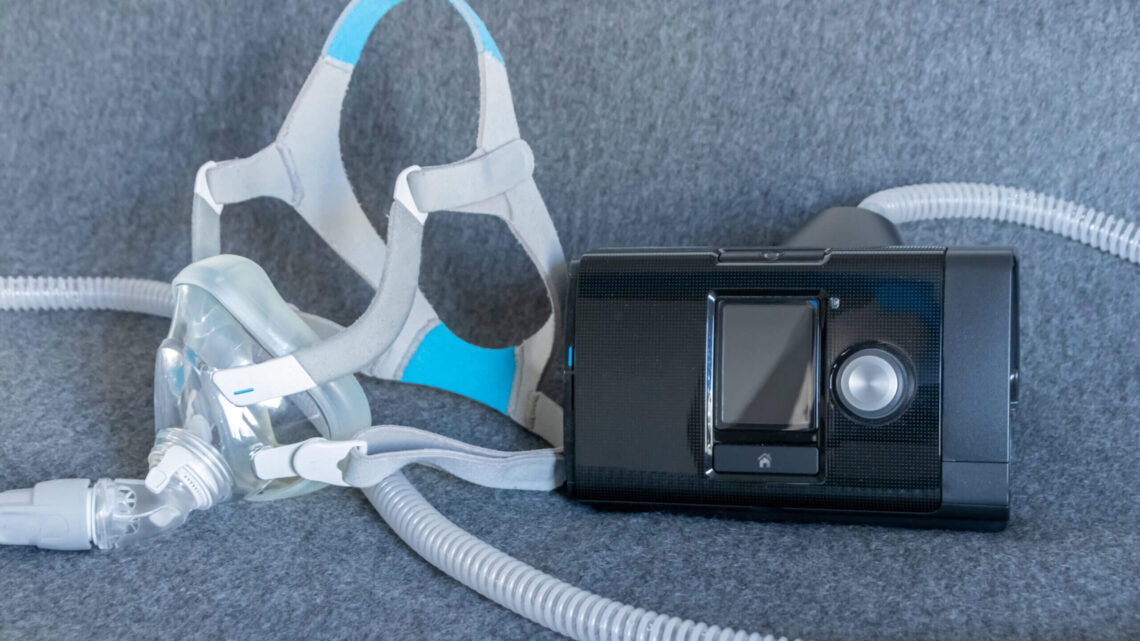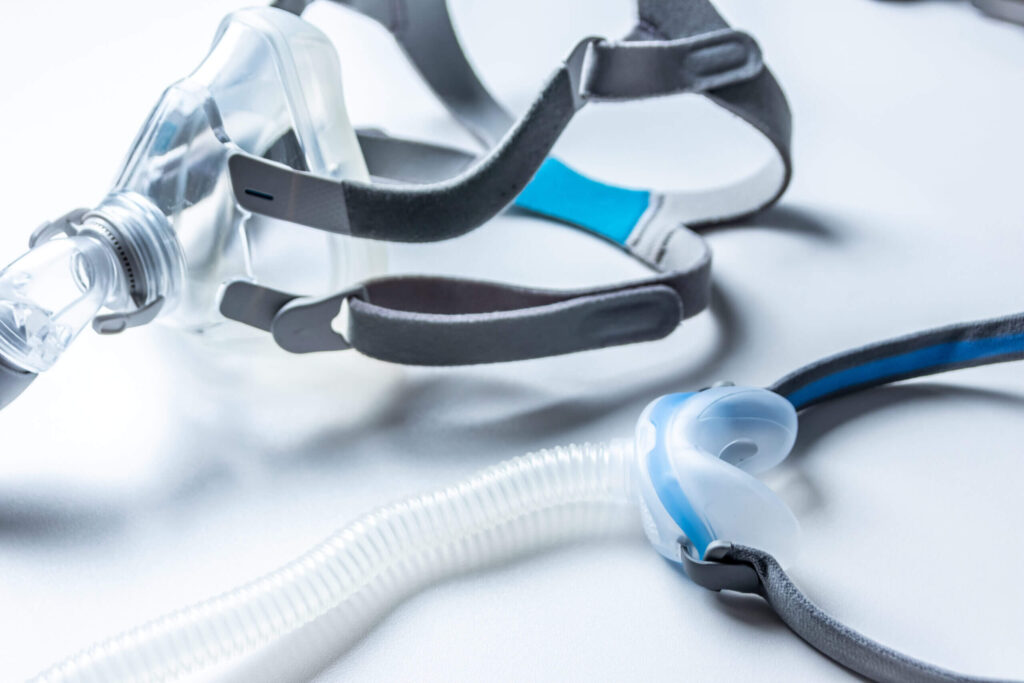
Using a CPAP machine is one of the most effective ways to treat sleep apnea and improve your sleep quality. But to keep your machine working properly — and ensure you continue to breathe comfortably through the night — maintenance and cleaning are essential.
Just like any medical device, a CPAP (Continuous Positive Airway Pressure) machine needs regular attention. A well-maintained CPAP system not only performs better but also prevents health issues caused by bacteria, mold, and allergens that can build up over time.
In this guide, you’ll learn how to clean your CPAP machine, when to replace parts, and how to extend its lifespan for years of reliable sleep therapy.
Why CPAP Maintenance Matters
Your CPAP therapy works by delivering a constant flow of air pressure through a mask to keep your airway open while you sleep. Over time, moisture, skin oils, and dust can collect in the tubing, mask, and humidifier chamber.
Without regular cleaning, this buildup can cause:
- Unpleasant odors or mold growth
- Respiratory infections
- Reduced airflow and poor machine performance
- Shortened equipment lifespan
Maintaining your CPAP machine isn’t just about hygiene — it’s about protecting your sleep health and ensuring your therapy remains effective.
How CPAP Therapy Improves Sleep Health
For people living with sleep apnea, breathing stops and starts throughout the night. This leads to oxygen deprivation, poor sleep quality, and symptoms such as fatigue, morning headaches, and irritability.
A CPAP machine restores normal breathing by:
- Keeping airways open with continuous air pressure
- Improving oxygen flow to the heart and brain
- Reducing nighttime awakenings
- Enhancing energy levels and focus during the day
According to sleep medicine specialists, consistent CPAP use can also reduce the risks of heart disease, high blood pressure, and stroke — conditions commonly linked to untreated sleep apnea.
Daily CPAP Cleaning Routine
Keeping your machine clean doesn’t take long — just a few minutes a day can make all the difference.
Here’s a simple daily cleaning guide:
- Unplug the machine before cleaning.
- Remove the mask and tubing.
- Wash these components with warm water and mild, fragrance-free soap.
- Rinse thoroughly to remove soap residue.
- Air-dry the parts on a clean towel (avoid direct sunlight).
- Empty and rinse the humidifier chamber with warm water daily.
💡 Pro Tip: Avoid using harsh chemicals or alcohol wipes — they can damage the silicone and reduce the machine’s effectiveness.
Weekly Deep Cleaning
Once a week, give your CPAP equipment a more thorough cleaning.
Deep-clean checklist:
- Mask and headgear: Soak in warm, soapy water for 30 minutes.
- Tubing: Flush with a mixture of mild soap and water, then rinse thoroughly.
- Humidifier chamber: Wash with gentle detergent and check for mineral deposits.
- Filters: Remove and inspect; wash or replace depending on type.
This routine helps prevent bacterial growth and ensures your machine delivers clean, steady airflow during sleep.
When to Replace CPAP Parts
Even with regular cleaning, some components wear out over time. Knowing when to replace them ensures your CPAP therapy remains safe and effective.
| Component | Replacement Frequency | Why It Matters |
|---|---|---|
| Mask cushion or nasal pillows | Every 1–3 months | Silicone can lose its seal and cause air leaks |
| Headgear straps | Every 6 months | Elasticity weakens, reducing fit and comfort |
| Tubing | Every 6–12 months | Moisture buildup can cause mold or cracks |
| Air filters | Monthly (disposable) or every 3 months (reusable) | Filters trap dust, pollen, and bacteria |
| Humidifier chamber | Every 6 months | Prevents mineral buildup and contamination |
🩺 Regular replacements keep your therapy hygienic and prevent breathing discomfort or air pressure loss.
Signs Your CPAP Needs Maintenance or Replacement
If your sleep quality begins to decline, it might not always be due to the sleep disorder itself — your machine could be the issue.

Look out for these warning signs:
- Musty or unpleasant smells from the tubing
- Whistling or rattling noises from the device
- Air leaks around the mask
- Poor pressure delivery or airflow
- Discoloration or visible mold in the humidifier
If any of these occur, inspect and clean your system immediately — or contact your sleep equipment provider for guidance.
Extending the Lifespan of Your CPAP Machine
Your CPAP machine can last 5–7 years with proper maintenance. Here’s how to maximize its longevity:
1. Keep It Clean and Dry
Always air-dry your components completely before reassembling to prevent mold and bacterial growth.
2. Use Distilled Water
Avoid tap water in the humidifier, as minerals can build up and damage the chamber.
3. Replace Filters Regularly
Filters prevent dust and allergens from entering the machine. Clean or replace them as recommended by the manufacturer.
4. Store in a Safe Place
Keep your machine in a clean, dry area away from direct sunlight and pets.
5. Schedule Regular Checkups
Many sleep clinics offer CPAP maintenance and pressure calibration checks to ensure optimal performance.
The Health Impact of Poor CPAP Maintenance
Neglecting your machine’s care can have more than mechanical consequences — it can affect your health.
Unclean equipment can introduce bacteria and allergens into your airway, leading to:
- Sinus infections
- Coughing or sore throat
- Respiratory irritation
- Reduced CPAP efficiency
This can undo the progress of your sleep apnea treatment, leaving you feeling tired, unfocused, and at greater risk of heart disease and sleep apnea complications.
Practical Advice for New CPAP Users
If you’re new to CPAP therapy, start by building a simple routine:
- Clean your mask and tubing every morning.
- Keep spare filters and replacement cushions on hand.
- Don’t skip a night — consistency is key to better results.
- Track your sleep quality using built-in machine data or apps.
Over time, maintenance becomes second nature — and your reward is healthier, deeper, and more restorative sleep.
Final Thoughts
Your CPAP machine is an investment in your long-term sleep health. Proper cleaning and regular part replacements not only keep it functioning efficiently but also ensure you’re breathing safely and comfortably every night.
A little daily care goes a long way toward preventing breakdowns, maintaining consistent airflow, and supporting your journey toward a healthier, well-rested life.
If you’re ever unsure about replacing parts or machine performance, consult your sleep medicine specialist or CPAP provider for professional guidance.
FAQS
A CPAP machine provides a continuous stream of air pressure through a mask to keep your airway open during sleep. This prevents pauses in breathing, improves oxygen flow, and enhances sleep quality.
Yes. By preventing nighttime breathing interruptions, CPAP therapy allows for deeper, more restorative sleep — helping you wake up feeling energized and alert.
Mild side effects like nasal dryness or mask discomfort may occur but can be managed with humidifiers, mask adjustments, or advice from a sleep specialist.
Most users notice improvements in sleep quality and energy within the first few days or weeks of consistent use.